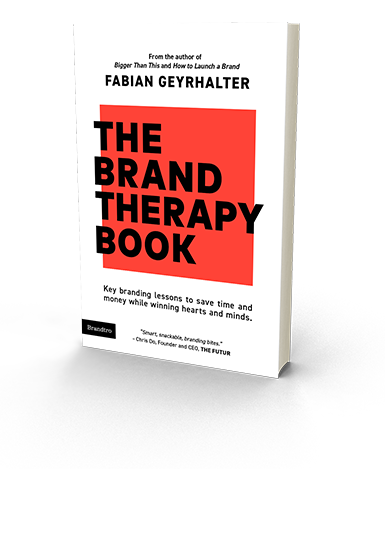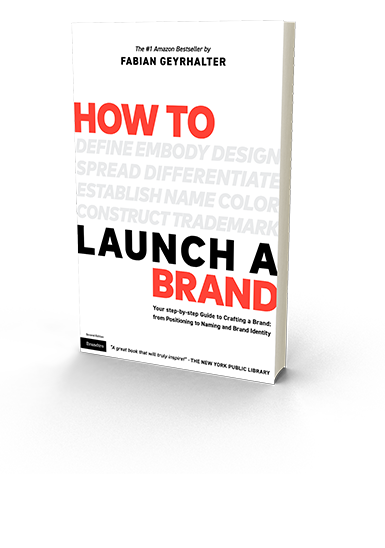Tag Archives: Inc Magazine
3 Brand Lessons to ‘Trump’ Them All
There is something very sincere we can learn from ‘The Donald.’
This article was originally published as part of my column in Inc.
A long time ago, I made a promise to myself that I wouldn’t ever touch upon politics in my writing. I broke my rule back in February when I was interviewed by The Washington Post on Hillary Clinton’s brand, comparing its legacy to that of McDonald’s. I sure broke my rule nicely. So here I go, breaking all my rules in one sentence, yet again:
There is something very sincere we can learn from Mr. Donald Trump.
Before you hit the comments field in rage, let me explain. ‘The Donald’ is quintessential branding in the making, and we can all witness it live, night after night.

I recently came back to Los Angeles from a three-week European vacation. As I left the U.S. for my trip, I started worrying that Trump would become the center of every conversation I’d have with friends and strangers alike. From answering the ‘Do Americans really like him?,’ the ‘Could he really become President of the United States?’ and, of course, the most dreaded, ‘What do you think’? In the end, the conversation only came up once, and instead of my expected response, I found myself somewhat defending the idea that is Trump. I was shocked.
It turns out I am actually fascinated by the Trump persona and brand, even though politically and intellectually I would like to remove myself rather far from his viewpoints. The fascination comes from something truly mesmerizing, something that has nothing to do with the political Trump brand. New and steadily growing ventures alike can utilize these 3 lessons I learned from Trump to turn into better brands — even if they otherwise grunt at the TV and look the other way when ‘The Donald’ disrupts their dinner:
1. Be A Frank Brand
A Donald brand is a Frank brand. It’s confusing, I know, but you cannot refrain from looking in awe at this man’s candor. If anyone, it should be Mr. Trump that reads off perfectly crafted scripts and not answer any unvetted questions, yet he walks on stage and goes off-script within seconds. Despite everything that comes out of his mouth (and much is met with regret by many on his team, not to mention his wife), it is his candor that makes him feel different, honest… a true go-getter. He defines showmanship through a very unique personality — raw and uncensored. That’s what today’s voters and consumers alike are aching for in both people and brands: being truthful and having the guts to give it to me straight. The days of scripted press releases are numbered. How can your brand make that switch? Clearly if Trump draws a crowd that way, your brand can achieve the same (without the drawbacks) if you speak your mind to an audience that thinks alike. By eliminating some, you will earn many others.
2. Craft a Hit – Then Hit Repeat
Rolling Stone quotes Gwenda Blair (Author of Donald Trump: Master Apprentice) saying “It’s all he does, the bragging and the repetition: It’s called branding, and he’s relentless at it.”‘ Over and over again you will hear the same statements about his money, the other — the bad — rich folks, and China with a bit of ‘bad Obama’ and taxes we should be getting from foreign companies sprinkled on top. Step and repeat. Fear of getting boring? Look at Nike’s Twitter bio today. What does it say? ‘#justdoit’ – and that’s it. Nothing more. Nothing less. Nothing new — and that’s just fine. If the message was crafted with its audience in mind and is well received by that audience, stick to it. Relentlessly. Seek your hit and start playing it like Trump.
3. Turn Surreal Into Real
Though we may often think of Trump as far removed from reality (and his voters), he has found an audience of blue-collar working class citizens who deeply connect with him — a man who lives with a self-proclaimed and oft-questioned 2014 income of $362 million. Herein lies the magic from a branding point of view: his life is surreal, but he translates it into a reality that his audience can relate to. It’s quite magical. Marketing in and of itself is a very surreal form of communication. You assume a lot about your audience while being stuck with the point of view of an advertiser or business. Once you hit the green light on an E-Blast, a magazine ad publication or a Facebook post, you witness surreal turning into real. The more you think like the ones on the receiving side, the more real it will become. And that’s where you need to be: part of reality as a real, honest and truthful brand.
Indeed, being uniquely and truly yourself, not worrying about the haters, repeating the best stories and the ones that connect are all part of what makes great brands.
As for Donald, he may not become the next President of the United States, but he sure makes for a grand brand spectacle we can all learn from. In moderation, of course.
Naming Your Company? 4 Ways to Get Unbiased Feedback
Sell your team on a new company name by following these four steps.
This article was originally published on Inc on June 10, 2015.
Two years ago, I had an epiphany. And I did what entrepreneurs fear most after successfully being in the same business for over a decade: I made a big change. I decided to drastically reposition my design and branding business, and with that came the necessary name change.
After crafting hundreds of names, I picked the name FINIEN. The team had its doubts. The name could be reminiscent of a shark (fin) or even death (finir in French = to finish), hence no one would ever hire us again, especially as a consultancy that crafts names for a living. We might be doomed. Despite these fears, we moved forward with the name, and that decision has treated us well.

Here are four key takeaways from naming companies like our own that will assist on your quest for a great company or product name. The rule above all rules: after consulting with (and hiring) professionals who derive names for a living, trust your gut and go for it.
So you went through the checklist and you feel it is the right name for your company moving forward. If that’s the case, don’t open it up for the emotional, unproductive feedback typical of a larger group. If you ask your significant other, (s)he will likely react emotionally and might not understand the full strategy, research and context. (S)he will hear an unfamiliar name and will immediately sense danger. If you ask your co-workers, they might have similar feelings, in addition to the fear of their professional future within your company. What if the name backfires? Why does our fearless leader have to ask us, “Is it not a good name?”
They should be afraid. Naming is a scary thing, but lucky for them, you already did that part for them and you’re confident that you’re on the right path. That said, sometimes you just have to ask for peace of mind and to give your key partners a feeling of ownership prior to officially taking this significant step.
As long as you present a clear case as to why a name change is necessary, tell them that you’ve narrowed it down to 1 (or 2) final name(s) through hiring a professional naming agency (if applicable) and that you have a clear favorite (and explain why). You now want their buy-in (what you will get is their opinion) just in case you forgot anything when making that decision (and make sure they’re in the know for the big announcement). If you’re about to have that meeting, here’s how to go about it the right way:
1. Define the Confidants. They Will Define The Outcome.
Who should be the two to four people who you want to gain feedback or buy-in from? Choose them based on their involvement in your company. They may be co-founders or partners, but they shouldn’t be freelancers, non-VC level employees or peers. Not to discriminate, but to keep it to a very small and influential group that you’d like to have your back during the rollout phase.
2. Be Confident. Be Assuring.
Tell them you made up your mind, even if you’re still split between two names. Explain why the change was necessary. Share how long the process took and how many names you went through to get there. If applicable, share that they’ve been professionally derived and vetted and you feel very excited about the new company/product name. It’s a new era and you’re thrilled to let them in early on.
3. Story First. Names Later.
Present them with only one or two names. Even if you’re still indecisive, sound assertive. If your presentation feels insecurely, they will feed that fire. First, tell the story of each name as well as the meaning and the keywords that have been used–only then show them the name. After sharing the backstory, say the name out loud while showing it on screen or on paper. As they familiarize themselves with the name, tell them your grand vision for how clients and co-workers will use it, how it sounds answering the phone, how great it would look visually, and how the name really tells the story of your company without limiting your future growth. Repeat for name No. 2, all while keeping the next rule in mind.
4. Leave the Past Behind: Say Hello To the Future
While looking at the new naming options, most will only associate with the past (the ‘faster horses’ syndrome). You’ll have to reiterate the idea that this new word will soon not represent any current connotations (usually only negative ones will be brought up by the group, like ‘death’ and ‘shark’), but will instead represent your company. Your mindset is already in the future; if you’re renaming, you already emotionally detached from the current and attached to the new name. It will be a big challenge for them to overcome. Remember our name, FINIEN? The (short and rather brilliant) name would have likely died by committee based on past associations. Today, you hear FINIEN and you think about branding, startups, and yours truly. It’s how it works. Brands are being built. You have to explain why it’s necessary to think of the name six months from today. Try not to associate any words with the name, but rather the image of your company.
Gaining buy-in is crucial to finding a great name. Use these points to prep for the meeting that may decide the future of your brand’s name. And, most importantly, trust your gut.
CATEGORIES: Startup Advice Your Brand Launch: Naming



